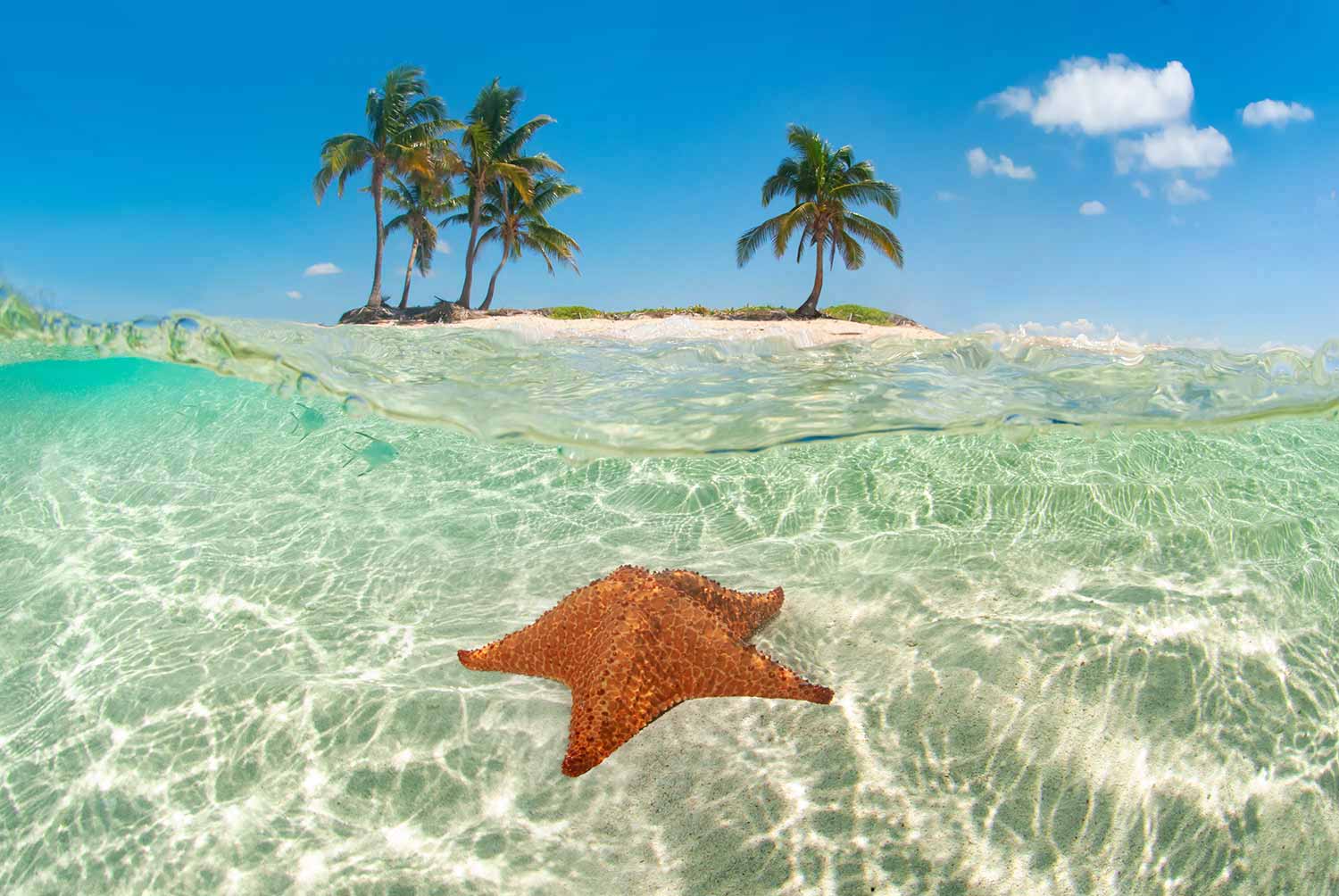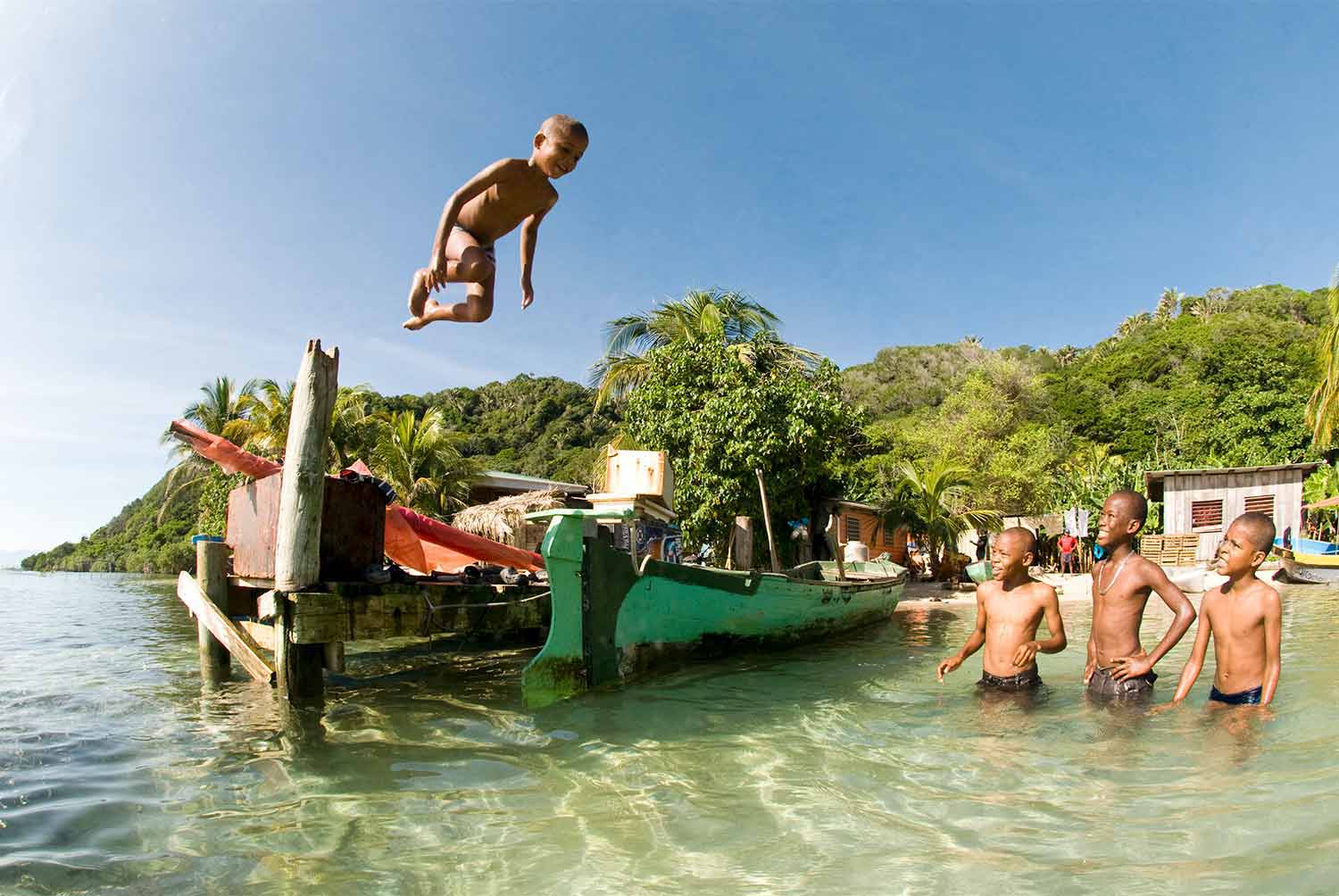Cayos Cochinos: A Scuba Diver’s Dream Come True
About 20 miles off the coast of Roatan lies Cayos Cochinos, a UNESCO World Heritage Site and fiercely protected Marine Preserve. And on days where the weather is just right, dive operators can take you to the heart of this pristine archipelago, comprised of 15 islands, and the Garifuna people who reside there.
2 of the islands are inhabited, while the remaining islets embody the essence of untouched paradise. White sand stretches as far as the eye can see, palm trees sway gently in the breeze, and azure waters embrace the shorelines.
But the real magic lies beneath the surface…
Large schools of fish, swaying sea fans, unpredictable currents, and blue as far as the eye can see. This is diving Cayos Cochinos.
Picture this: towering underwater mountains rising from the depths of the ocean and extending to shallower waters, teeming with an incredible variety of marine life. This is what divers can expect when visiting the Seamounts of Cayos Cochinos, also known as Roatan Banks.
What Are The Seamounts?
The seamounts of Cayos Cochinos are located 17 miles south from Roatan and 19 miles north of La Ceiba on the mainland. Thanks to their remote location, the banks boast a vibrant reef structure that remains nearly untouched.
Because the banks are located quite literally in the middle of the ocean, they are not always accessible for diving. And even if top side weather conditions are favorable, the underwater current could be telling a different story. This means diving the seamounts of Cayos Cochinos is always new and exciting – and should only be undertaken by experienced divers who are comfortable venturing to the mounts varying depths – which peak between 70′ and 40′.
While the seamounts are the most renowned, amazing banks can be found everywhere along the east and west side of the Cayos archipelago. Making this area a smaller, but still vital, segment of the Meso-American Reef.
Cayos Cochinos Archipelago
Cayos Cochinos is a beautiful archipelago of 15 islands that belongs to the Bay Islands Department. It consists of 2 inhabited islands, Cayo Menor and Cayo Grande, and 13 smaller cays. The cays are the epitome of Caribbean perfection – a few feet of sand, dotted with palm trees, and surrounded by crystal clear turquoise water. In total, Cayos Cochinos measures 0.8 square miles of land mass.
Cayos Cochinos is inhabited by the Graifuna people, who live in 2 small fishing villages called Chachauate and East End. Most of the inhabitants are fishermen by trade, and are actually the only people allowed to fish within the Cayos Cochinos Marine Reserve. According to the the last census taken in 2011, the total population in the area is 108. There are no cars or scooters on Cayos, and the islands themselves are only accessible by boat.
Please note, the entire archipelago is a Marine Protected Area which is managed by the Cayos Cochinos Foundation. There have been many people involved in preserving this area, so we encourage all visitors to take part in keeping Cayos a healthy and pristine marine habitat.
Who Are The Garifuna People?
Let’s delve into the rich history of the Garifuna people, the sole inhabitants of Cayos Cochinos. Originally hailing from St. Vincent and the Grenadines in the eastern Caribbean, they are descendants of a captivating blend of Amerindian Arawak, Carib from Kalinago, and African peoples.
Their story traces back to around 1200 when their ancestors, the Amerindian Arawak and Carib, migrated from South America and settled on St. Vincent long before European arrival. In 1635, two Spanish ships carrying hundreds of Nigerians shipwrecked nearby, and the surviving slaves found refuge among the Carib-Arawak population, further enriching the Garifuna ethnicity.
Peace reigned until the early 1700s when French interest sparked conflict. The Garifuna fought valiantly for their freedom, forming alliances with the French against the British. However, British dominance led to two Carib wars, resulting in defeat and exile for many Garifuna to Roatán in 1797.
Today, over 800,000 are descendants of the original Garifuna, with communities spanning Saint Vincent and the Grenadines, Honduras, Guatemala, Mexico, Belize, and the United States. Proud of their heritage, they have preserved their language, attire, and cultural traditions – embodying resilience and strength through centuries of adversity.
















